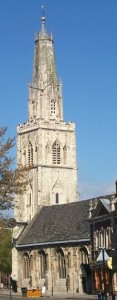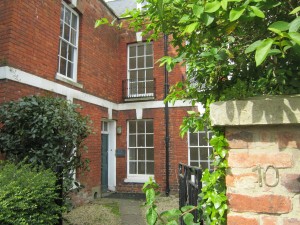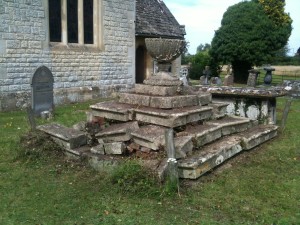On the 1st of November 1699, George Gwinnett and his wife, Elizabeth, neé Coxe, took their baby son, Samuel, to Elkstone church to be baptised. He was the eighth of nine children born to the couple.
It is not known where Samuel went to school; his oldest brother, George, attended the College School in Gloucester Cathedral but Samuel’s name does not appear in the admission register; it is possible, however, that his entry was omitted but there is no proof of that. Yet, he was obviously an intelligent boy because, in his late teens, he attended Glasgow University from which he graduated with a Master of Arts degree in May 1726.
After his university education, Samuel returned to Gloucestershire where he settled to a vocation as a clerk. He was obviously well known in the area and in some demand as a minister. The first testimonial letter sent to the Bishop of Gloucester on Samuel’s behalf came from Edward Loggin Griffin, the rector of Uley. On 26th May 1726, Griffin wrote:
To the Right Revnd. Father in God, Joseph Lord Bishop of Gloucester.
My Lord
I hereby promise to employ Samuel Guinnet A.M. of the University of Glasgow in that part of Great Britain called Scotland, as my Curate at Uley, county and diocese of Gloucr when he is ordained and legally qualified and to allow him such competent and reasonable salary as your Lordship in your great wisdom shall order and appoint. Witness my hand this twenty sixth day of May 1726.
Edward Loggin Griffin, Rector of Uley
[Source: GA Ref: GDR E1 (Ordination Papers.]
There is no evidence that Samuel actually went to Uley as a curate. Two days after the Uley letter was sent, on 28th May 1726, the ministers of Longney and Taynton also wrote to the Bishop of Gloucester:
To the Reverend Father and Lord in Christ, Lord Joseph, by divine permission Bishop of Gloucester
We whose names are written below, testify by these presents that our beloved in Christ, Samuel Gwinnet, A.M., personally known to us for six months last past, has conducted his life piously, soberly and honestly: has acted as a faithful subject to his royal Majesty; nor (as far as we know) has ever held any dogmas contrary to the Catholic faith received in the Church of England. Moreover, we believe him to be a man worthy to be promoted to the holy order of deacon.
Given the 28th day of May in the year of the Lord 1726
- Abbot, A.M., vicar of Longney
- Newton rector of Taynton
James Elly
[Source: GA Ref: GDR E1 (Ordination Papers. Translated from Latin by David Bethell]
On the 4th September 1727, Samuel, like several Gwinnetts before him, was made a freeman of the City of Gloucester. The record does not specify the reason for his acceptance; it is likely to have been either ‘by fine’, which means he paid for the privilege, or granted by the councillors themselves.
On 21st September, 1727 another letter of testimonial was sent to the Bishop of Gloucester, as follows:
We whose names are written below, testify from our personal knowledge that Samuel Gwinnett M.A. of the parish of Twinning in the county of Gloucester, who has lived among us for a long time (namely, for 12 months last past), to have lived piously, soberly and honestly, nor (so far as we know or believe) has held or taught anything but what the Church of England approves and observes, and, moreover, that he is an apt and suitable man, to be promoted to the holy order of priesthood.
Given the 21st day of September and in the year of the Lord 1727
I Freeman, Ambrose Baldwyn, John Parsons
[Source: GA Ref: GDR/E2. Translated from Latin by David Bethell]
This is the first indication that Samuel lived for a while in the village of Twyning, where he is believed to have met his future wife, Ann, the daughter of Fulke Emes and his wife Ann, neé Prise.
On the 25th September 1727, Samuel was instituted as the vicar of Down Hatherley. His patron was King George II.
Gwinnett, Samuel
To the vicarage of Down Hatherly
On the 25th day of the month of September aforesaid, was admitted Samuel Gwinnett clerk, A.M., to the vicarage of Down Hatherley in county Gloucester, deanery of Winchcomb, our diocese, vacant by the death of Thomas Pugh, last incumbent there, to whom he was presented by the most Illustrious prince and lord in Christ, lord George II by the grace of God king of Great Britain, France and Ireland, and true and undoubted patron of the same vicarage; and was canonically instituted vicar into the same.
[Source: GA Ref: GDR/292A & GDR/279A. Translated from Latin by David Bethell]
An entry in the Alumni Cantabrienses shows that, in 1728, Samuel Gwynnett was granted a special Bachelor of Laws (LL.B) degree granted by the University of Cambridge. The entry reads:
Samuel Gwynnett, LL.B., 1728 (Com. Reg)
[The ‘Comitia Regia’ were certain gatherings of the Senate of the University of Cambridge at which royal personages were present and degrees specially conferred.]
A year later, on 30th December 1728, Samuel applied for a licence to marry Anne Emes or Emms. No marriage has yet been found for this couple but, given Samuel’s occupation, I think we can be sure it did take place within the next few days. Ann was the daughter of Fulke Emes and his wife, also called Ann neé Prise; Ann Emes was born about 1700 in Marden in Herefordshire, but living at the time of her marriage in Twyning in Gloucestershire. Her father, Fulke, died in 1726 and Anne was probably in need of a husband to support her.
Two years later, on 13th February 1731, the first of the seven children born to Samuel and Anne, was baptised in the church of St Mary de Lode in the City of Gloucester. She was named Anna Maria but she was not destined to reach adulthood. Before her fifteenth birthday, Anna Maria was buried in the churchyard of St Nicholas Church at Cottrell in Glamorgan. It is assumed she died whilst visiting relatives there. The cause of her death is not known.
Another year passed and another child was born to the couple. On 6th June 1732, Samuel junior was baptised, again in St Mary de Lode church. At the age of 7, on 9th July, Samuel junior was enrolled in the College School. Samuel senior was recorded at that time as being ‘of the City of Gloucester’ and so, presumably, he was not living in the vicarage at Down Hatherley. Samuel junior later attended Oriel College, Oxford and matriculated at the age of 23. He was to follow in his father’s footsteps and take holy orders.
In the following year of 1733, Samuel was to lose his mother and then, six months later, in March 1734, his father George also died. Both parents were buried in the Unitarian Church in Barton Street, Gloucester, where they had lived during the latter years of their lives.
The next child to be born was Button Gwinnett, named after his godmother, Barbara Button. His baptism occurred on 10th April 1735 and was recorded in the St Catherine’s Church registers. Button was later to travel to America where he became famous, becoming the equivalent of the present Governor of Georgia and being one of the signatories on the American Declaration of Independence.
It was in the same year that the Reverend Samuel Gwinnett, vicar of Down Hatherley, was instituted as the curate of St Nicholas Church, Gloucester. Records also refer to him being curate of St Bartholomew’s Hospital which was allied with the church. At a meeting of the Common Council of the City of Gloucester held on the 20th day of May 1735, the following was recorded:
Who shall be elected and chosen Minister of the Churches of St. Bartholomew and St Nicholas in this city vacant by the death of Mr Benjamin Newton, Clerke, deceased. And have the stipends, salaryes and perquisites thereto respectively belonging. And also have an instrument to pass under the common seale of this Corporation purporting the donation thereof.
Mr Samuel Gwinnett, Clerk, 25
Mr Newton 1
[Source: GA Ref: GBR B3/9 f.365]
Samuel was obviously the favoured candidate for the vacancy. On 23rd August 1735, Samuel Gwinnett accepted the ‘Three Articles’ [1. The King is the supreme head under God, 2. the Book of Common Prayer contains nothing contrary to the word of God, 3. The Book of Articles of Religion is also not contrary to the word of God.], writing:
I Samuel Gwinnett A.M. to be admitted to perform the Office of Curate in the parish church of St. Nicholas in the City of Glocester and Diocese of the same do willingly, after having thought upon and considered of this matter subscribe to the three articles prefixed and to all things which are contained in them this the 23rd day of August in the year of our Lord one thousand seven hundred and thirty five.
[Source: GA Ref: GDR 282A]
Samuel was then instituted to the curacy of St. Nicholas, the same day, as follows:
Gwinnett Saml. Curate of St Nicholas, Gloucr.
The twenty third day of August 1735 Samuel Gwinnett A.M. was admitted to perform the office of a Curate in the parish church of St. Nicholas in the City and Diocese of Gloucester void by the death of the last incumbent on the nomination of the Mayor and Burgesses of the City of Gloucester.
[Source: GA Ref: GDR 284]
In 1736 and 1738, two more sons were born to Samuel and Anne but neither of them survived infancy. Thomas Prise Gwinnett’s baptism was recorded in the St Catherine’s registers and Robert Gwinnett was baptised in St Nicholas’ Church.
Sometime over the next few years, a fifth son was born and called John Prise Gwinnett. His baptism has never been found but he is believed to have been the sixth child born to Samuel and Anne. The seventh and last child was another daughter, called Emilia. She was baptised in St Nicholas’ Church on 23rd December 1741. Emilia is believed to have lived with her parents until they died, when she moved to Glamorganshire to join her brother, Samuel junior, and his wife.
The fact that six of the children born to Samuel and Ann Gwinnett were baptised in three different parishes in the city of Gloucester leads one to assume that Samuel moved around the city, renting different houses, presumably as his family grew. Records from both the Borough of Gloucester and of Gloucester Cathedral have been searched but no evidence as to where the family actually lived was found therein. All that emerged was that Samuel, as the curate of St. Nicholas, had to pay a ‘pension’ of 13s 4d a year to the Dean and Chapter of the Cathedral who, in turn, had to pay an ancient ‘langable’ rent of 13s 4d a year to the Mayor and Burgesses of the city. In reality, Samuel reluctantly paid this money, owing, at one time, 9 years’ payments but the Dean and Chapter exceeded this; when Samuel died in 1775, 26 years’ of langable rents were due to the borough!
It was during the year of 1741, when Emilia was baptised, that the family occupied a house in College Green, within the precincts of Gloucester Cathedral. There is an entry in No Fine but a Glass of Wine by Susan Eward (on Page 303) which states:
The first mention of any building on the site where 10 College Green stands now was in 1741 when a lease of No. 9 refers to a tenement ‘now in the possession of Samuel Gwinnett Clerk on the west. Before this date, the ground was always referred to as ‘a Dunghill or Mixon’ commonly called the Half Moon Dunghill, with a stable belonging to John Gregory and later to Frances Cotton on the south. Just to the north of the Dunghill were the coach house and stables belonging to the Dean of Gloucester which were old and ruinous and had been greatly damaged by fire.
According to Samuel Rudder, in his History of Gloucestershire, there were over 200 people living in the Cathedral Close around that time, in about 50 properties. By 1851, Samuel and his growing family had moved on and a Thomas Davies was living in the property.
Samuel not only acted as the curate of St. Nicholas church in Gloucester but he also preached several sermons a year there on behalf of the Mayor and Burgesses, the church, according to Fosbrooke’s An Original History of the City of Gloucester the church being the ‘Westminster Abbey for the members of the Corporation’. For this service, he was normally paid the sum of one guinea for each sermon.
In Bishop Benson’s Survey of the Diocese of Gloucester, 1735-1750, in volume C dated 1743, it mentions that the Down Hatherley ‘vicarage house was burned and rebuilt. No other reference to this occurrence has been found.
In 1748, John Prise, the uncle of Samuel’s wife, Ann Gwinnett, died. In his will, John Prise mentioned his sister, Ann Emms, a widow. He also left a payment of fifty pounds a year to his ‘kinswoman, Anne Gwinnett, in trust and for the maintenance of his daughter Arden Prise during her life’. Arden Prise was declared a lunatic in 1748, at a commission and inquisition into her state of mind and her property. [Source: National Archives reference: C211/19]. So, it would appear that, despite having seven children of her own to care for, the oldest at that time being Samuel junior who was sixteen, Ann took on the care of her cousin, Arden, as well.
Four years later, in 1752, Ann Gwinnett claimed, in a case brought by Francis Geere or Geers, a physician from Winchcombe, in Gloucestershire, for non-payment of fees, that she had not received the money and was due £150. Without the money, she was unable to pay Mr Geere. [Source: National Archives reference: C11/2516/12].
As far as it is known, life continued fairly normally for Samuel Gwinnett until, in June 1750, he experienced problems with his churchwardens at St Nicholas. He recorded the following incident in the parish registers of St Nicholas.
“The Clerk was obliged to open the door next to the churchyard, the churchwardens having insolently put a lock on the front door to bar my entrance into the church. A key have since been sent me. “
Barbara Button, a relation of Anne Gwinnett died in 1755 and left Ann a sum of £30 per annum in her will. (It is from this will, and other records, that we learn definitely of Samuel and Anne’s son, John Price Gwinnett, who inherited money along with his four surviving siblings).
On the 16th of August, 1767, at about the age of 67, Ann Gwinnett, the wife of Reverend Samuel Gwinnett was buried at Down Hatherley. That left Samuel a widower, with his daughter, Emilia, to care for him.
Despite the fact that Samuel was obviously living in the city of Gloucester rather than in the village of Down Hatherley, at least when the children were young, he does not appear to have neglected his parochial duties there. Each page of the parish registers is signed by him until 1767, following the burial entry for his wife, Ann, when the signatures cease. Also, the churchwarden’s accounts for most years up to 1761 and often the overseers of the poor accounts are signed by Samuel, as well.
Eight years later, at the age of 75 years, the Reverend Samuel Gwinnett died and on 14th September 1775, he was buried next to his wife, Ann.
This does not appear to be the original tombstone. Ralph Bigland, in his Historical, Monumental and Genealogical Collections relative to the county of Gloucester edited by Brian Frith, stated that it was a ‘raised circular tomb‘. He described the ‘Arms, on two Escutcheons; 1.a Chevron between three Spear Heads, for GWINNETT. 2. On a Fess a Lion issuant,’
The original inscription read:
Haec urna colligit cafte
& amplectitur
quod est mortale ANNE GWINNETT
cujus formam mentemque honestarunt
gratia veneresque;
& in foemina vere patuit & eluxit
socratica virtus χαλοχγαθια
fic moribus & elegantiis ornata
fuis, amicus, notis,
vixit chara,
& omnibus viate partibus bene peraetis
decessit plorata.
Anno Salutis 1768, Aetatis 74.
Hos cineres
nec mitrata violet insolentia,
nec mitrata laedat aut malitia,
heu! sordidae tenuisque mentis vitium
& literis ingenioque prorsus alienae!
Nec polluant artes infimorum pravae,
quippe has foeces olim ingurgitarunt
mors & inamia.
Sunt SAMUELIS GWINNETT, pastoris fidi
nec verbum adulterantis, nec parce cauponantis,
at in hujus Ecclesiae muniis obeundis
largi, simplicis, sinceri, instantis;
subsecivas horas dedit academiae,
at inter hasce severiores disciplinas
nec inurbanus, nec inficetus;
denique per vitam honestam & decoram
homo vere philosophicus studuit,
civilis excoluit.
Anno Vicariatus 48, Aetatis 75, Salutis 1775.
On the base:
Filius hunc lapidem parentibus
posuit pie
& lachrymis facieque aversa
charitatis extrema rite persolvit.
No obituary has been located for Samuel.

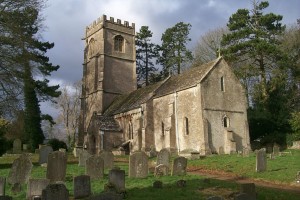
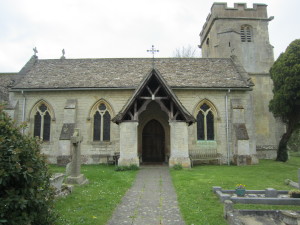
![Courtesy of Gloucestershire Archives, reference: Q3/42/p/7]](http://www.gwinnett.me.uk/wp-content/uploads/2015/12/Samuel-Gwinnett-1728-300x53.jpg)
